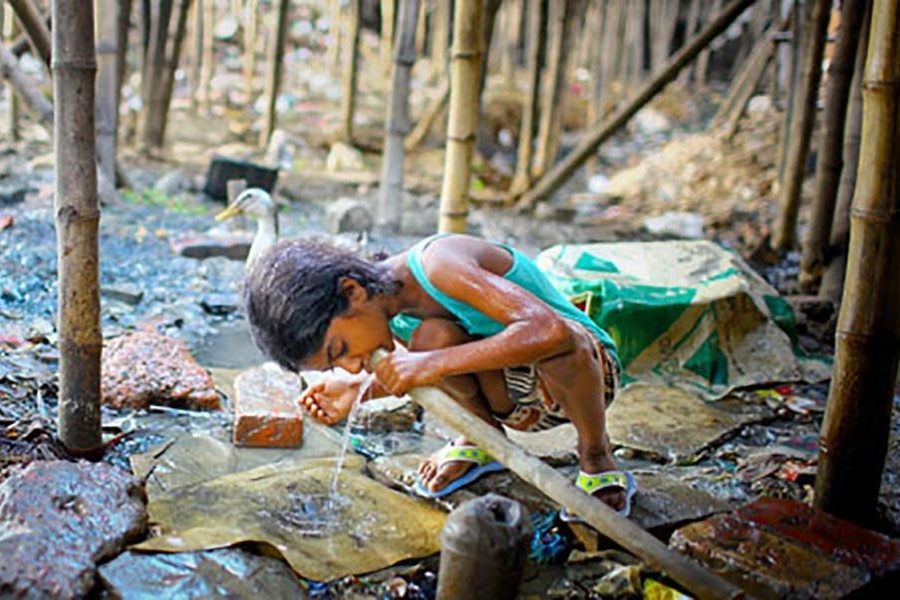Countries eligible to borrow from the International Development Association (IDA)-the World Bank's fund for the poorest countries-entered the Covid-19 crisis already facing elevated debt levels and weak fiscal positions. The pandemic is now placing enormous pressure on these countries to finance additional expenditures for relief and recovery amid shrinking fiscal revenues and limited access to sustainable financing. This intensifies debt risks at a time when these countries are already vulnerable.
Almost one year into the crisis, the proportion of IDA countries (assessed using the Low-Income Country Debt Sustainability Framework) in or at high risk of debt distress has climbed to 55 percent from 50 per cent, continuing the deteriorating trend evident since 2013.
As countries look to revive growth and embark on a resilient recovery from the pandemic, they will need access to scaled up amounts of sustainable financing and a redoubling of efforts to address debt vulnerabilities.

IDA'S INCENTIVE-BASED APPROACH IS DESIGNED TO SUPPORT REFORMS THAT ADDRESS DEBT VULNERABILITIES: IDA has responded swiftly with a substantial upsurge in highly concessional financing, combined with grants to countries most vulnerable to debt distress, to meet immediate pandemic-related needs and to support progress on critical development goals.
As part of the response efforts, IDA has also sharpened its focus on debt. Anchored in the World Bank's broader agenda on debt is the Sustainable Development Finance Policy (SDFP) to help countries manage rising public debt vulnerabilities and risks. The policy complements other initiatives like the G20 Debt Service Suspension Initiative in mutually reinforcing ways, notably by creating the conditions for debt transparency.
This new debt policy aims to incentivise countries to move towards transparent and sustainable financing, and to promote coordination between IDA and other creditors. Under the SDFP's Debt Sustainability Enhancement Program, each year, countries with elevated debt risks identify performance and policy actions (PPAs) that are key to enhancing debt transparency, fiscal sustainability, and debt management. Countries that do not satisfactorily implement their PPAs will not be able to access 10 or 20 percent of their IDA country allocations in the following year, depending on their level of risk of debt distress.
Recognising that sustainable financing is a collective responsibility of borrowers and creditors, the SDFP's Program of Creditor Outreach aims to promote creditor outreach and coordination on transparent and sustainable lending practices, including debt transparency.

BRINGING DEBT VULNERABILITY TO THE FOREFRONT OF POLICY DIALOGUE IN IDA COUNTRIES: Early experience in implementing the SDFP has found that it is propelling debt issues to the forefront of policy dialogue in IDA countries and influencing reform programs supported through the World Bank's lending operations, especially in Development Policy Financing operations. Thus far, steady progress has been reported in identifying robust PPAs that are informed by debt sustainability analyses, the World Bank's debt reporting heat map, and other analytics. In fact, in the first five months of implementation beginning July 2020, 26 IDA countries had approved PPAs; this number was 47 around mid-February, or 85 per cent of countries that were required to have PPAs.
Results for the 47 countries with approved PPAs show that nearly three-fourth of countries had at least one PPA focused on debt transparency, which included improvements to comprehensiveness of public debt data and timeliness of debt reporting.
The policy's strong focus on debt transparency underscores the importance of robust data in accurately assessing sustainability of debt, while ensuring resources are used efficiently and effectively, especially amid higher risks and increased need. Better data and more transparency are also a win-win: they help policymakers make more informed borrowing and investment decisions; allow investors and creditors to appropriately price sovereign risk; and support mechanisms for accountability in government, promoting efficiency of spending.
Beyond debt transparency, PPAs also addressed fiscal sustainability and debt management, which are equally crucial to ensuring a resilient recovery from Covid-19. Fiscal sustainability PPAs largely focused on better identifying and managing fiscal risks, including from state-owned enterprises. These PPAs represent first steps toward reforms to improve efficiency of spending. Eighty-five percent of countries have at least one PPA on debt management. PPAs in two-thirds of countries have a ceiling on external non-concessional borrowing. However, while such ceilings are important to helping reduce debt vulnerabilities, they could also constrain an effective crisis response and recovery-unless sufficient concessional resources are available in addition.
TACKLING DEBT VULNERABILITIES REQUIRES A MEDIUM-TERM PERSPECTIVE: The underlying drivers of debt vulnerability are complex and adequately addressing them requires a medium-term perspective. That's why the SDFP has been established as a multi-year process that facilitates continuous policy engagement with country governments.
Indeed, early experience in implementing the policy shows that most PPAs are programmatic, laying out a solid medium-term agenda for progressively tackling debt vulnerabilities. But wide-ranging reforms beyond the scope of the SDFP will be needed, supported by sustainable financing, to meet all the challenges of this unprecedented crisis. At such a time, IDA's unique ability to coordinate and collaborate closely with other international organizations and stakeholders will be essential to helping countries tackle debt vulnerabilities and bounce back stronger than before.
Punam Chuhan-Pole is Lead Economist, Corporate IDA & IBRD Department (DFCII)
at the World Bank. The piece first appeared in the World Bank Blogs
https://blogs.worldbank.org/voices


